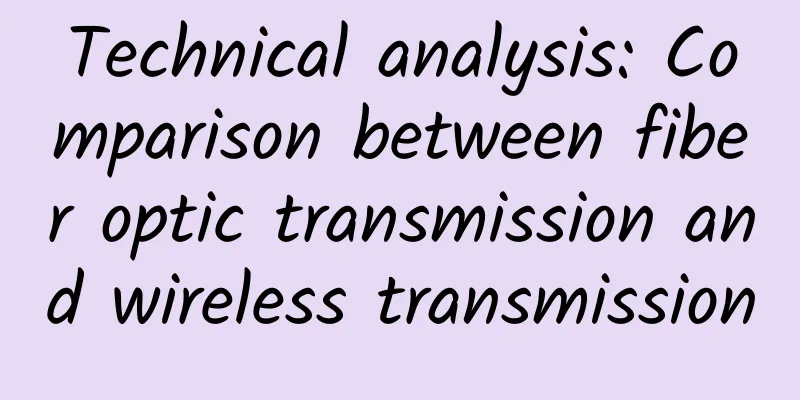To promote the migration of 2G/3G to NB-IoT/Cat1, the Ministry of Industry and Information Technology released the first important document on the Internet of Things in 2020!

|
Yesterday, the General Office of the Ministry of Industry and Information Technology officially issued the "Notice on Deepening the Comprehensive Development of Mobile Internet of Things", which is the first document specifically for the Internet of Things field in 2020.
In this "Notice", the Ministry of Industry and Information Technology deployed five key tasks, including network construction, technical standards, industry applications, industrial systems, and security assurance. The "Notice" was formed on the basis of in-depth research on the basic situation of the domestic Internet of Things. To a certain extent, it reflects the trends and key points of industrial development this year and in the next few years. Many aspects of it are worthy of attention from the industry. The author has selected several items for interpretation. Source: Ministry of Industry and Information Technology website First, the 2G/3G migration was formally proposed in a public document for the first time. The opening of this Notice clearly states that “2G/3G IoT business migration and network transfer should be promoted”. In October 2019, at a press conference held by the State Council Information Office on the development of the industrial communications industry in the first three quarters of 2019, Wen Ku, Director of the Information and Communications Department of the Ministry of Industry and Information Technology, mentioned that “the conditions for my country’s mobile communications networks to withdraw 2G and 3G networks have gradually matured”, which can be regarded as the first official statement on the withdrawal of 2G/3G networks. The release of this Notice is the first time that the Ministry of Industry and Information Technology has clarified its attitude towards the withdrawal of 2G/3G networks in the form of a formal document. As early as several years ago, the topic of 2G/3G frequency reduction and network withdrawal was raised one after another in the industry, and various operators have also started the work of 2G/3G frequency reduction and network withdrawal to varying degrees, and launched various alternative solutions. For example, China Unicom clearly proposed in its annual report to "promote 2/3G frequency reduction and network withdrawal in different regions, reduce network operation costs, and re-cultivate spectrum resources"; China Mobile also clearly mentioned in the "5G Terminal Product Guidelines" released in 2018 that the terminal mode frequency band is no longer required to support TD-SCDMA, and the future 5G terminals only need to support NR/TD-LTE/LTE FDD/WCDMA/GSM, which shows the attitude towards the withdrawal of 3G networks. Director Wen Ku also made it clear at the press conference that "the withdrawal of 2G/3G networks is an inevitable choice for the renewal of mobile communications." It can be expected that driven by policy support and the demand for enterprise resource allocation, the withdrawal of 2G/3G networks will accelerate in the next few years. Of course, different operators have different paths in the withdrawal of networks, with two different options: withdrawing 2G first or withdrawing 3G first. Second, 1.2 billion connections is only one step away, and a reasonable structure is more important The Notice clearly states that the number of mobile IoT connections will reach 1.2 billion by the end of 2020. I predict that there will be no big suspense in achieving this goal. According to the 2019 Communications Industry Statistical Bulletin, the number of mobile IoT connections exceeded 1.03 billion by the end of 2019, compared with 671 million at the end of 2018. Judging from the data from the Communications Industry Statistical Bulletin over the years, the number of mobile IoT connections has been growing very fast in recent years. Number of mobile IoT connections (unit: billion, source: Ministry of Industry and Information Technology, IoT Think Tank) According to the latest data, by the end of March 2020, the number of mobile IoT connections had reached 1.078 billion, a quarterly increase of 48 million. At this rate, it will only take one step to break through 1.2 billion by the end of the year. The "things surpass people" trend, where the number of mobile IoT connections exceeds the number of connections between people, will soon be realized. However, most of the more than 1 billion mobile IoT devices are still based on 2G network connections. Against the backdrop of 2G network withdrawal, this structure is not healthy. Therefore, the "Notice" also clearly proposed in its development goals to "establish a comprehensive mobile IoT ecosystem with the coordinated development of NB-IoT, 4G (including LTE-Cat1) and 5G". The author believes that compared with the number of connections, the goal of the distribution of the IoT connection structure is more important. Only by accelerating the elimination of backward production capacity and using the most advanced and mainstream technologies to support the formation of a multi-level and reasonable IoT connection structure from low speed to high speed and from high latency to low latency can we assume the role of "new infrastructure" in supporting the digital transformation of various industries in the next decade. One bright spot is that the Notice particularly emphasizes the role of Cat1. The industry unanimously believes that in the next few years, NB-IoT+4G will become the mainstream mode in the IoT connection structure, and Cat1 occupies the vast majority of the share in 4G, and together with NB-IoT, it constitutes the main force of medium-speed and low-speed IoT connections. At present, the domestic Cat1 industry ecosystem is gradually improving, and chip manufacturers and platforms represented by Unisoc and ASR occupy the main share. Various module manufacturers have successively launched Cat1 modules, making Cat1 a hot spot in the IoT in 2020, and the module cost has also opened a channel for decline. Third, guide new IoT terminals to stop using 2G/3G networks How to accelerate the withdrawal of 2G/3G networks and how to achieve a multi-level and reasonable IoT connection pattern? The Notice also gives relevant suggestions and key work directions. Among them, the typical measures are: while ensuring the network service level of existing IoT terminals, guide new IoT terminals to stop using 2G/3G networks and promote the migration of existing 2G/3G IoT services to NB-IoT/4G (Cat1)/5G networks. After more than a decade of evolution, despite multiple frequency reductions and network withdrawals, the scale of 2G/3G network infrastructure is still very large. The following is the change in the total number of 2G and 3G base stations over the past decade: Total number of 2G+3G base stations in each year from 2009 to 2019 (Unit: 10,000, source: Ministry of Industry and Information Technology, IoT Think Tank) As of the end of 2019, there are still more than 2.8 million 2G and 3G base stations, supporting more than 300 million mobile phone users and hundreds of millions of IoT connections, which far outnumber mobile phone users. Faced with this huge infrastructure and user base, although 2G/3G frequency reduction and network withdrawal have been ongoing, this is a long process. This process has policy support, but it cannot be completed by administrative orders, and still needs to be done according to the laws of the market economy. Director Wen Ku also pointed out at the press conference: From the user's perspective, mobile network withdrawal cannot be simply announced today and then closed tomorrow. This is inappropriate. Network withdrawal must be planned in advance, and operators must plan and inform early about mobile network withdrawal. From the perspective of the Internet of Things, accelerating the migration of 2G Internet of Things through market-oriented means is nothing more than making efforts in both stock and incremental aspects. For incremental Internet of Things demand, it is necessary to ensure the provision of 2G alternatives, which not only have advantages in technology, but also need to have advantages over 2G in all aspects such as network quality, cost, and industrial ecology; for existing 2G Internet of Things connections, it is necessary to promote them as soon as possible to accelerate and shorten their life cycle. The various measures proposed in the Notice are based on the above two directions. In addition to the measures of "guiding new IoT terminals to stop using 2G/3G networks and promoting the migration of existing 2G/3G IoT services to NB-IoT/4G (Cat1)/5G networks", specific suggestions are also made in "improving the mobile IoT industry chain", such as encouraging local governments to set up special support and innovation funds to support the research and development of NB-IoT and Cat1 dedicated chips, modules, equipment and other products; further reducing the cost of NB-IoT modules to the same level as 2G modules in 2020; increasing the research and development of Cat1 chips and modules to promote the reduction of module costs, etc. Fourth, it is proposed to "build new NB-IoT base stations as needed" The Notice clearly proposed "building new NB-IoT base stations as needed" in its recommendations for network construction. In my opinion, this description, to a certain extent, reflects the idea of NB-IoT infrastructure construction in the short term, that is, there will be no large-scale network construction, but it will be demand-oriented, with more emphasis on refined construction and deep coverage. Therefore, it can be expected that the scale of NB-IoT base stations will not increase significantly in the short term, but it will be more secure in supporting key projects and key applications. At the 5G NB-IoT Billion Journey Summit held last month, Liu Yulin, deputy director of the Information and Communications Department of the Ministry of Industry and Information Technology, mentioned in his speech that as of the end of last year, my country had built more than 700,000 NB-IoT base stations, achieving continuous coverage of major cities and townships across the country, laying a good network foundation for the development of various applications. These 700,000 NB-IoT base stations constitute the main body of NB-IoT's wide coverage and infrastructure, and these 700,000 base stations have also cost operators tens of billions of investments. According to the 2019 annual report data of the three major operators, the three manufacturers plan to spend more than 330 billion in capital expenditures in 2020, of which more than 180 billion will be used for 5G investment, accounting for more than 50%. Against the backdrop of increasing demand for 5G investment and tight capital expenditures, large-scale investment in NB-IoT networks is unlikely, so "building new NB-IoT base stations on demand" has become the main model for NB-IoT network investment. Planned investment of the three major operators in 2020 (Source: Operators’ financial reports) However, Liu Yulin also emphasized that the NB-IoT network coverage needs to be further improved. In some areas, the NB-IoT network coverage level cannot fully meet the requirements of carrying 2G connection migration, and the local coverage depth needs to be strengthened. When building a network for human-to-human communication, the main considerations are areas with dense populations and people's main activities. Information about these areas is relatively easy to obtain, and network planning is based on this; however, the planning of the Internet of Things network is more complicated, and the emergence of many Internet of Things application requirements is random, which further makes planning difficult. Therefore, "construction on demand" is a good way to solve these problems. The construction of new NB-IoT base stations based on clear needs can not only solve network planning problems, but also reduce costs for operators. Of course, there should be more innovative ways to build NB-IoT on demand. For example, the pain point of many IoT projects is that there are blind spots in the network. A variety of flexible ways can be used to solve blind spots, including the use of small stations and integration with other communication technologies to fill blind spots. The "Notice" clearly states: Support the development of mobile IoT network quality assessment tests to promote network service quality to meet user needs. This measure is of great reference significance for the on-demand construction of NB-IoT. In addition, the "Notice" mentions: Achieve deep coverage for application scenarios such as indoor, transportation road networks, underground pipe networks, and modern agricultural demonstration areas; focus on network operation and maintenance, monitoring and optimization, and improve network service levels. These measures and suggestions are all aimed at achieving further refined construction of NB-IoT. While building networks on demand, it is also necessary to upgrade existing networks, upgrading R13 sites to R14 to significantly improve network performance. The author suggests that NB-IoT cross-network roaming can also be considered for pilot testing. If it can be implemented on a large scale, it will greatly expand the service scope of operators. Fifth, focus on deep integration with various vertical industries The development of the mobile Internet of Things industry chain is only a means, and the goal is to enable the digital transformation of various vertical industries. An obvious feature of the "Notice" is that it pays great attention to the integration of mobile Internet of Things and various vertical industries. In the arrangement of standards and technologies, the Notice clearly states: formulate standards for the integration of mobile Internet of Things and vertical industries, and promote the formulation and implementation of technical standards and interconnection standards for mobile Internet of Things terminals and platforms in key areas such as smart homes, smart agriculture, industrial manufacturing, energy meters, fire smoke sensors, logistics tracking, and financial payments, so as to improve the level of standardization of industry applications. The industries listed are all industries where mobile Internet of Things has penetrated deeply in recent years. The time is gradually ripe to incorporate mobile communications and Internet of Things technologies into the standards of various vertical industries. For example, industries such as meters and smoke sensors have already written Internet of Things-related technologies into their industry standards. Among the safeguard measures, the Notice mentioned: Strengthen infrastructure planning, encourage local governments to comprehensively consider the needs of smart applications in the construction of industrial parks, smart cities, beautiful villages, urban roads and bridges, municipal pipe networks, integrated pipe corridors, transportation and logistics, green landscaping and other infrastructure, and prepare for the construction of mobile Internet of Things related facilities or reserve space in advance. According to the definition of the scope of new infrastructure by the National Development and Reform Commission, these areas listed in the Notice will form "integrated infrastructure" after the in-depth application of mobile Internet of Things, and will also be included in the new infrastructure, providing more multipliers for economic and social development. The above five points are my interpretation of the "Notice on Deeply Promoting the Comprehensive Development of Mobile Internet of Things". Of course, there are many highlights in the "Notice" that deserve attention, such as the mobile Internet of Things development index model, support for mobile resale companies, security system construction, cloud-pipe-edge-end collaboration, etc. Due to the limitations of space and personal knowledge, I will not interpret them one by one. I believe that the role of these aspects will also be highlighted in the future development of mobile Internet of Things. |
>>: 【Funny story】An attack launched by a network cable
Recommend
What exactly does edge computing mean?
The word "edge" has been given a new de...
Telecommunication Research Institute report shows that 5G indoor coverage is only 60%
In the third and fourth quarters of 2021, China T...
I'm a tough guy, so please take this detailed description of IPSec architecture.
IP Security Architecture, referred to as IPSec, i...
Super detailed! Introduction to Ethernet switch security features
Today I will talk to you about the security funct...
Comprehensively view 5G construction and development to accelerate the expansion of 5G application ecosystem
At present, countries around the world are accele...
China has 600,000 5G base stations. Why should 5G investment be moderately ahead of schedule?
In the popular movie "My Hometown and Me&quo...
NTT and Cisco Collaborate to Implement Software-Defined WAN Solutions for Customers
[[419187]] As Cisco's global strategic partne...
The Importance of PoE in Surveillance and Remote Security Systems
Many devices on the network today, such as IP cam...
V5.NET: Huawei Cloud Private Line (Hong Kong) Server Limited 30% Discount Monthly Payment Starting from 318 Yuan
V5.NET Server is promoting Huawei Cloud dedicated...
Friendhosting's 13th anniversary: 50% off on all VPS, 10 data centers with unlimited traffic, starting at 16 euros per year
Friendhosting has launched a promotion for its 13...
Will enterprises have dedicated 5G networks in the future?
5G networks bring many benefits to smartphone use...
Samsung bets on European 5G orders to grow network equipment business
Samsung Electronics is pinning its hopes on Europ...
GraphQL vs. REST: What have you learned?
Overview When creating a web service application,...
Friendhosting 50% off promotion, VPS half-year payment starts from 7.5 euros
Friendhosting has launched a promotion for "...
Say goodbye to data "roaming" fees: 10 questions, everything you want to know is here
Recently, the three operators have successively i...









